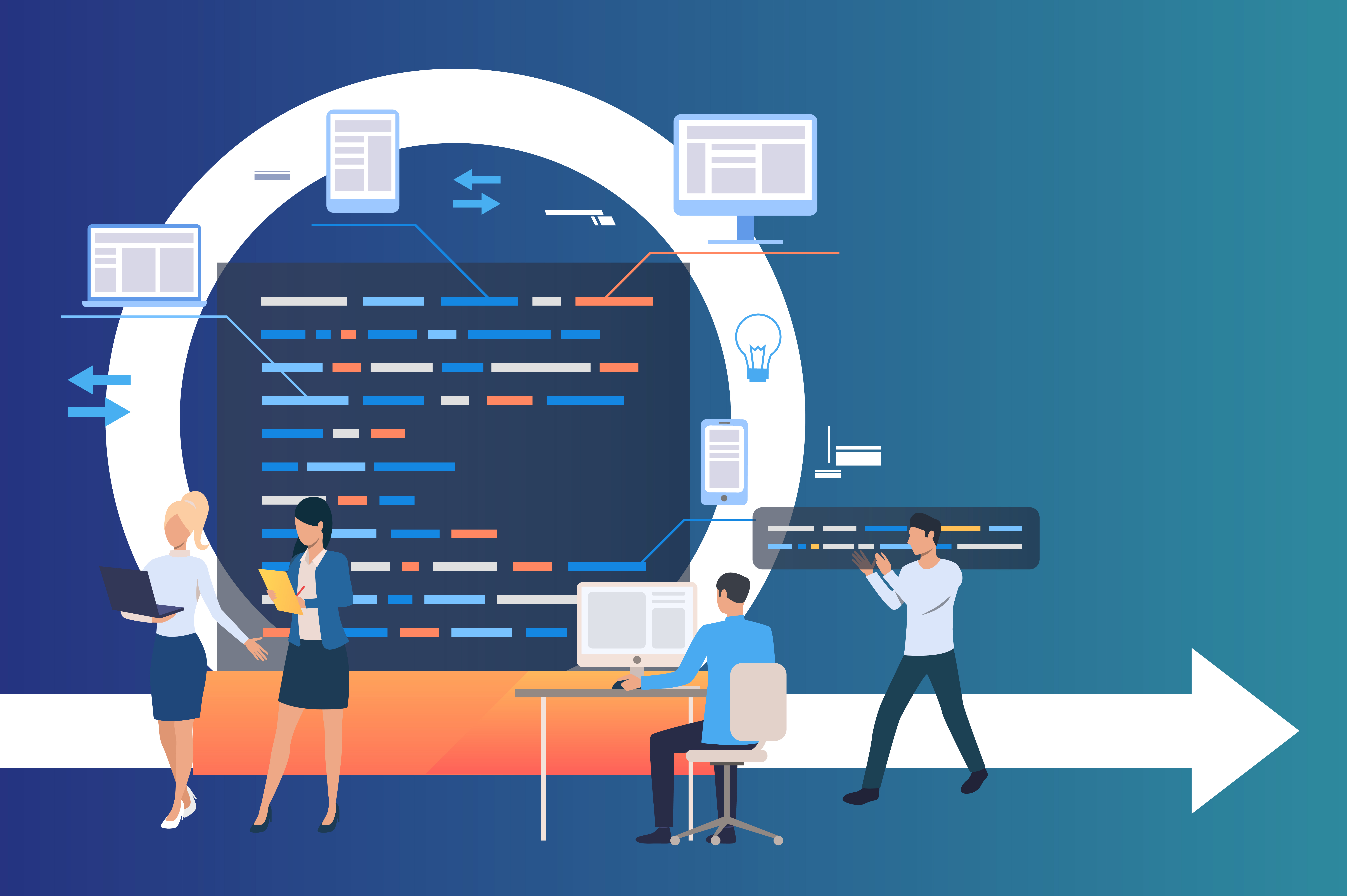Global Tech Talent Strategy: Choosing the Right Outsourcing Model in 2025

Strong 8k brings an ultra-HD IPTV experience to your living room and your pocket.
Introduction
By 2025, the global demand for tech innovation is reshaping how businesses approach software development. Organizations, whether fintech startups in New York, SaaS providers in London, or healthcare platforms in Sydney, must strategically address talent shortages, rising operational costs, and the accelerating pace of digital innovation. One effective solution that's emerged is strategically outsourcing software projects—not just as a cost-cutting measure but as a critical competitive strategy. Understanding the available outsourcing models and selecting the right one can significantly influence a project's success and a company's growth trajectory.
Software Outsourcing Models in 2025: An Overview
Software outsourcing in 2025 transcends traditional offshoring; it has evolved into various strategic models:
- Remote Staff Augmentation: Hiring remote specialists to extend internal teams.
- Dedicated Development Teams: Exclusive remote teams handling full-cycle development.
- Hybrid Models: Combining local management with international technical teams.
Choosing among these depends on factors like scalability, communication requirements, and specialized technical needs.
Strategic Benefits of Outsourcing Software Projects
Companies outsourcing software development in 2025 seek more than mere cost savings—they pursue strategic advantages:
1. Accelerated Innovation and Market Entry
Rapid product development cycles are essential. Outsourced teams in emerging tech hubs like Vietnam, Ukraine, or Brazil enable quicker innovation and timely product launches, crucial for competitive industries such as fintech, e-commerce, and health tech.
2. Access to Cutting-Edge Technologies
Outsourcing partners often specialize in advanced technologies like AI, machine learning, blockchain, and cybersecurity, providing instant access to specialized skills and keeping internal resources focused on core business objectives.
3. Operational Flexibility and Agile Scalability
Businesses gain the ability to swiftly scale teams up or down according to project dynamics, leveraging agile methods and reducing traditional recruitment constraints.
4. Cost Optimization without Quality Compromise
Outsourcing provides significant financial savings through competitive global developer rates without sacrificing quality, crucial for maintaining sustainable growth.
5. Round-the-Clock Development Cycles
Leveraging multiple time zones ensures continuous productivity and shorter turnaround times, vital for organizations targeting rapid iterative improvements and continuous deployment.
Emerging Outsourcing Destinations and Talent Hubs
Strategic outsourcing isn't confined to traditional countries. Emerging tech hubs offer attractive alternatives:
Latin America (Mexico, Brazil, Colombia):
Offers nearshore advantages, strong English proficiency, and cultural alignment for North American companies.
Eastern Europe (Poland, Romania, Ukraine):
Known for technical excellence, EU compliance, cybersecurity expertise, and agile software delivery.
Southeast Asia (Vietnam, Philippines, Indonesia):
Competitive costs, mobile-first expertise, and government-backed tech ecosystems.
South Asia (India, Bangladesh, Sri Lanka):
Vast talent pools, cost-effective solutions, AI and cloud computing expertise.
Cost and Quality Analysis of Outsourcing Models
Companies evaluating outsourcing models must consider both cost and output quality:
| Model | Pros | Cons | Ideal Use Cases |
| Remote Staff Augmentation | Flexibility, direct management control | Limited scalability, resource dependency | Short-term projects, specific skill gaps |
| Dedicated Teams | Scalability, full-cycle management, cost-effective | Requires strong vendor alignment, management complexity | Long-term projects, enterprise products |
| Hybrid Models | Control and scalability balance, optimized costs | Complex coordination, communication overhead | Projects needing strategic oversight and scalable development |
Cost Breakdown by Global Tech Hub (2025 Estimates)
Understanding the hourly rate trends is key to strategic budgeting:
| Region | Hourly Rate (USD) | Specializations |
| USA (NY, SF, Austin) | $120 - $280 | AI, fintech, enterprise SaaS |
| Latin America (Mexico, Brazil) | $30 - $65 | Mobile apps, agile development |
| Eastern Europe (Poland, Ukraine) | $30 - $75 | Cybersecurity, AI, enterprise backend |
| Southeast Asia (Vietnam, Philippines) | $20 - $55 | Mobile-first, cost-effective solutions |
| South Asia (India, Bangladesh) | $15 - $45 | Full-stack, cloud, QA testing |
| Western Europe (Germany, UK) | $60 - $120 | Regulated industries, GDPR-compliance |
Selecting Your Ideal Outsourcing Partner: A Strategic Guide
Choosing a software outsourcing partner involves more than comparing rates—it demands careful consideration:
Proven Expertise:
Evaluate technical capabilities in your industry.
Effective Communication:
Ensure cultural fit and language proficiency.
Legal and Security Compliance:
Robust IP protection, confidentiality agreements, and adherence to international standards (GDPR, HIPAA).
Scalable Engagement Models:
Flexible team structures capable of adjusting as business needs evolve.
How to Validate Potential Software Outsourcing Companies:
Strategically validating your partner includes:
- Comprehensive Portfolio Reviews:
Check real case studies, client references, and third-party reviews.
- Pilot Engagements:
Conduct small initial projects to gauge coding standards, collaboration styles, and responsiveness.
- Structured Vendor Evaluations:
Confirm clear documentation, service-level agreements (SLAs), and transparency in processes.
Building High-Performing Distributed Teams in 2025
Integrating an outsourced team effectively means focusing on:
- Structured Onboarding:
Clear documentation, aligned processes, shared tools.
- Agile Communication Practices:
Use platforms like Jira, Slack, GitHub, and Zoom to maintain alignment.
- Regular Performance Tracking:
Employ code reviews, continuous integration/deployment (CI/CD), and clearly defined metrics (KPIs) to ensure accountability.
Strategic Considerations for Mobile App Outsourcing:
Mobile development continues to be a priority. Outsourcing allows businesses to rapidly deliver cross-platform experiences:
| Mobile Development Models | Tools | Ideal Scenarios |
| Native Development | Kotlin, Swift | High-performance, platform-specific apps |
| Cross-Platform | Flutter, React Native | Quick releases, unified codebase across Android/iOS |
| Hybrid Applications | Ionic, Cordova | Budget MVPs, content-driven apps |
Real-World Use Cases of Strategic Outsourcing:
Wise (Fintech, Estonia):
Wise, previously known as TransferWise, strategically chose to hire offshore developers by partnering with dedicated development teams in Ukraine. They implemented agile methodologies, utilizing continuous integration and continuous delivery (CI/CD) pipelines for their backend and mobile applications. This decision to hire offshore developers significantly shortened their product development cycle by 50%, reducing release times from monthly to bi-weekly. As a direct result, Wise rapidly scaled its services to over 13 million users worldwide by 2025, achieving a 35% increase in user adoption due to frequent feature updates and enhanced customer satisfaction.
Alibaba (E-commerce, China):
Alibaba engaged expert mobile development teams in Vietnam and Indonesia to accelerate its mobile-first e-commerce solutions. Adopting agile sprint cycles and design thinking workshops facilitated rapid prototyping and iterative releases. The offshore teams enabled Alibaba to achieve 30% faster app release cycles, significantly enhancing user experience and customer retention. This strategic approach directly contributed to a measurable 20% growth in mobile user engagement within a year.
Teladoc Health (Healthcare, USA):
Teladoc Health partnered with offshore AI and software development teams in India to build and deploy an AI-driven telehealth platform. Utilizing cutting-edge machine learning models, automation, and robust cybersecurity practices, the Indian teams delivered the platform six months ahead of the anticipated timeline, achieving 40% cost savings compared to local development. This strategic offshore collaboration enabled Teladoc to rapidly scale telemedicine services during critical growth periods, increasing patient onboarding rates by 25% year-over-year.
Conclusion: Outsourcing as a Strategic Asset in 2025Conclusion: Outsourcing as a Strategic Asset in 2025
By 2025, strategic outsourcing has evolved beyond simple cost-saving into an essential competitive advantage. Companies equipped with the right outsourcing strategy, partner selection, and global talent management practices will lead innovation and scalability in their respective markets. Understanding the global tech talent landscape, aligning outsourcing models with strategic business goals, and optimizing distributed team productivity will be critical for sustainable growth and global competitiveness.
Note: IndiBlogHub features both user-submitted and editorial content. We do not verify third-party contributions. Read our Disclaimer and Privacy Policyfor details.


